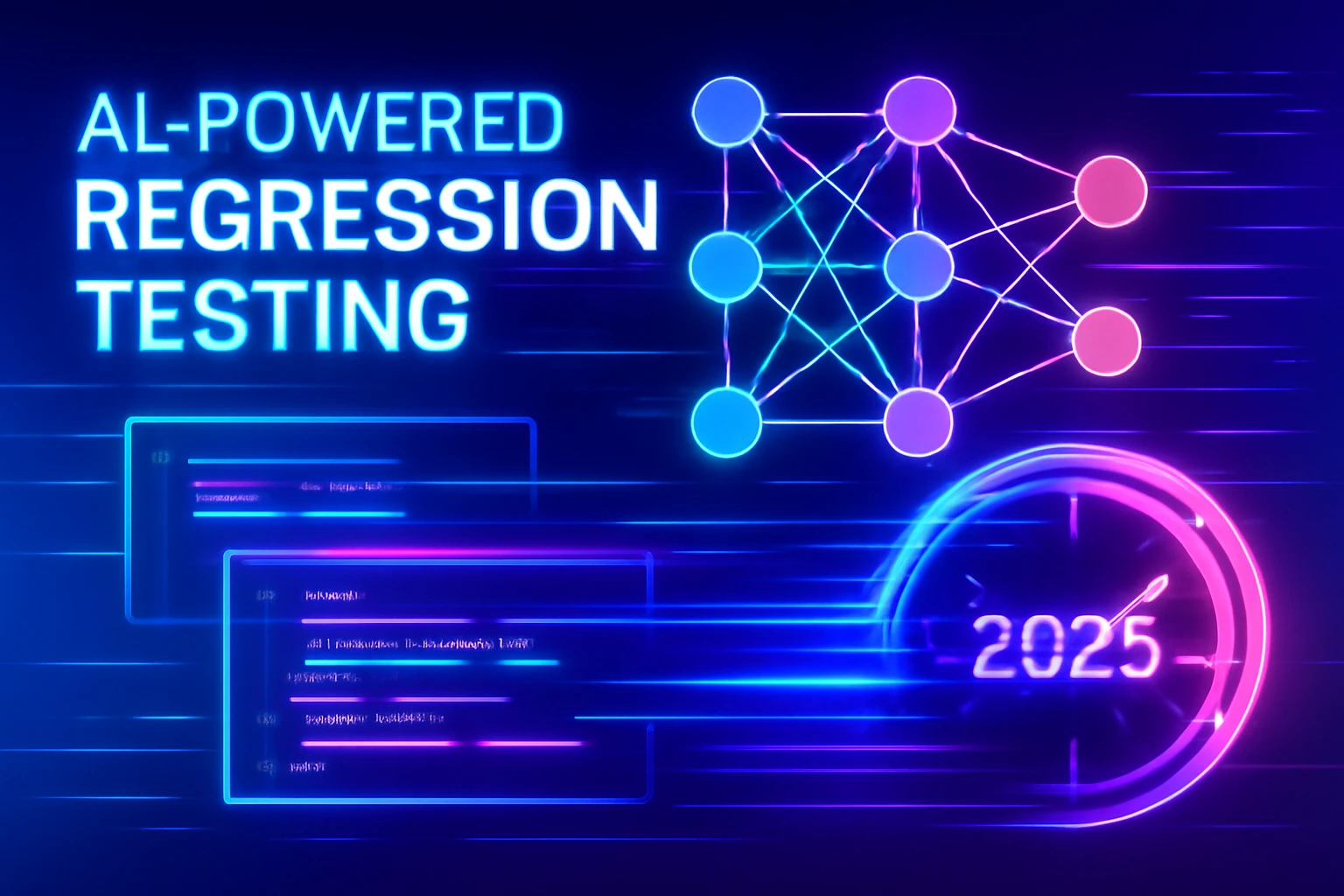
How a BDE Connects Business Vision With Technology
How a BDE Connects Business Vision With Technology Kumkum Kumari 21/11/2025At Speqto, we work with organizations that are constantly evolving entering new markets, scaling operations, or […]


Release cycles keep shrinking—weekly, daily, even hourly in some teams—yet every new commit risks breaking core flows. Manual regression suites cannot keep up, and traditional scripted tests crumble when UIs shift. Enter AI-powered regression testing: self-healing, intent-based tests that learn your application, spot visual drift, and adapt to minor changes without human tweaks.
This post explains how modern QA teams combine machine learning with cloud automation to ship reliable builds faster than ever, drawing on lessons from Speqto projects delivered in 2025.
Legacy regression suites often contain thousands of brittle XPath selectors and hard-coded waits. Small UI tweaks trigger false failures, engineers waste hours chasing “red builds,” and deadlines slip. Meanwhile, manual testers struggle to cover exploding device and browser combinations.
Speqto’s QA guild replaced flaky scripts with AI engines that model user intent instead of DOM positions. Visual baselines, element heuristics, and reinforcement learning allow tests to survive CSS refactors and A/B experiments. Pipelines now run in parallel on cloud grids, posting results—and screenshots—directly to Slack and Jira for rapid triage.
• Applitools Visual AI—detects pixel-level regressions across devices in seconds.
• Testim & Mabl—self-healing functional tests that re-map elements using ML models.
• GitHub Actions—spins up containerized test runners on every pull request.
• Playwright + Microsoft’s Auto-UI—generates locator strategies from computer vision.
• Speqto Insight Dashboard—aggregates test analytics and AI-flagged flaky patterns.
• Start small: Convert the top 20 smoke cases to AI tests before migrating the full suite.
• Tag critical paths: Label checkout, login, and payment flows as priority=P0 so AI platforms run them first and allocate more retries.
• Feed real data: Use production-like fixtures to improve anomaly detection accuracy.
• Monitor flakiness: Auto-quarantine tests with >5 % instability; investigate root causes weekly.
• Shift left: Gate pull requests with AI visual diffs; developers fix issues before code reaches QA.
• Self-healing selectors: When the DOM changes, the engine re-identifies elements by visual and semantic clues.
• Predictive failure analysis: ML predicts which upcoming builds will break based on commit metadata and historical flake signals.
• Natural-language test generation: Describe a scenario in plain English—“Add item to cart and verify subtotal”—and the platform synthesizes code.
In a recent e-commerce project, migrating 600 Selenium tests to AI reduced false positives by 82 %, cut overall execution time from 4 hours to 48 minutes, and enabled daily releases instead of weekly sprints. Team survey scores showed a 40 % drop in “debugging fatigue.”
The FinTech team integrated Applitools with Playwright for its React dashboard. Visual AI flagged a one-pixel shift in a candlestick chart tooltip—an issue invisible to functional assertions but critical for traders. The bug was fixed before reaching staging, preventing a potential revenue hit during market hours.
Diagram: Developer Commit → GitHub Actions → AI Test Cloud (self-healing) → Slack/Jira Results. Alt text: “AI-powered regression testing pipeline for rapid releases.”
AI-powered regression testing replaces brittle scripts with self-healing, intent-aware checks that scale with modern CI/CD. By slashing false failures and execution time, QA teams can focus on exploratory work while product teams ship features daily—without fear of hidden breakage.
Interested in bringing AI into your test pipeline? Contact Speqto’s QA centre of excellence for a pilot that delivers visible ROI within one sprint.

How a BDE Connects Business Vision With Technology
How a BDE Connects Business Vision With Technology Kumkum Kumari 21/11/2025At Speqto, we work with organizations that are constantly evolving entering new markets, scaling operations, or […]

Apache JMeter Demystified: Your 7-Stage Blueprint for a Seamless First Performance Test
Apache JMeter Demystified: Your 7-Stage Blueprint for a Seamless First Performance Test Megha Srivastava 21 November 2025 In the intricate world of software development and deployment, ensuring a robust user experience is paramount. A slow application can quickly deter users, impacting reputation and revenue. This is where Apache JMeter emerges as an indispensable tool, offering […]

STRIDE Simplified: A Hands-On Blueprint for Pinpointing Software Threats Effectively
STRIDE Simplified: A Hands-On Blueprint for Pinpointing Software Threats Effectively Megha Srivastava 21 November 2025 In the intricate landscape of modern software development, proactive security measures are paramount. While reactive incident response is crucial, preventing vulnerabilities before they become exploits is the hallmark of robust software engineering. This is where threat modeling, and specifically the […]

From Static to Streaming: A Practical Developer’s Guide to Real-time Applications Using GraphQL Subscriptions
From Static to Streaming: A Practical Developer’s Guide to Real-time Applications Using GraphQL Subscriptions Shakir Khan 21 November 2025 The Paradigm Shift: From Static to Streaming Experiences In an era where user expectations demand instant gratification, the web has rapidly evolved beyond its static origins. Today, a modern application’s success is often measured by its […]

The TanStack Query Edge: Deep Dive into Advanced Caching for Optimal Application Speed
The TanStack Query Edge: Deep Dive into Advanced Caching for Optimal Application Speed Shubham Anand 21 November 2025 In the relentless pursuit of seamless user experiences and lightning-fast web applications, data management stands as a formidable challenge. Modern front-end frameworks demand intelligent solutions to handle asynchronous data, and this is precisely where TanStack Query (formerly […]